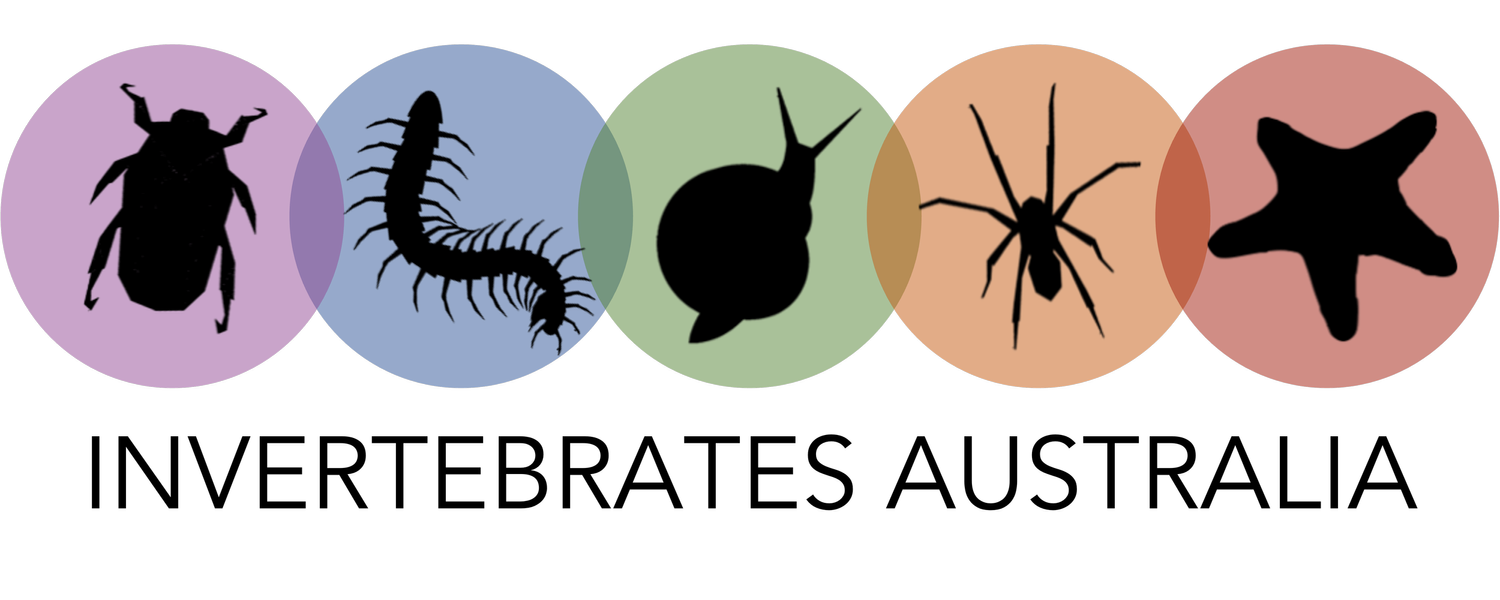Invertebrates Australia has three pillars - investigate, inform, inspire - which capture our major themes of activity. Our programs, described below, cover our priority areas for invertebrate conservation actions.
Key Places for Invertebrate Conservation
What places should we prioritise to ensure we protect invertebrate biodiversity? We are identifying Centres of Endemism, Key Biodiversity Areas and Areas of Importance for Invertebrates using spatial mapping, traits data, and surveys. This program allows us to provide critical information to end users about the places that we need to conserve to reverse global invertebrate decline, maintain invertebrate diversity and avoid invertebrate extinctions.
Invertebrate Conservation Assessments
We are submitting conservation assessments for invertebrates that are at risk of extinction and ensuring that these species are included on threatened species lists at the international, federal and state levels. This program is essential for ensuring that invertebrates are part of the discussion when it comes to conserving biodiversity.
Invertebrate Citizen Science & Public Awareness
Invertebrates are all around us getting on with their important work of making ecosystems and agrisystems function. They therefore provide an excellent opportunity for people to connect with nature. We are inspiring the Australian public to learn more about and care for Australia’s invertebrates through citizen science projects such as:
We have started this project to gather observations of Christmas Beetles. The count aims to understand the current distribution of Christmas Beetles through observations and compare to historic records to determine if there is a decline in certain species. Then we hope to use this information to identify potential causes and conservation solutions.
Bogong Moths are an endangered species of profound cultural, ecological, and economic importance to Australians. Although famous for their epic migration to the Australian Alps, the Bogong Moth's distribution and flyways are unknown, making conservation actions impossible. With this project we hope to forge key partnerships and harness public enthusiasm to generate the data needed for conservation actions, enhancing our capacity to identify and mitigate threats to this species.
Reducing Pesticide Use
Unsustainable pesticide use is one of the most important threats to invertebrates. We are working to have pesticide misuse recognised as a key threatening process. To complement this approach we run No Spray Spring, a major education and behaviour change campaign to develop awareness, especially to alert people to the threats that pesticides pose to biodiversity around their homes and gardens and in the wider ecosystem.
Invertebrate Science Translation for Conservation
Invertebrate science is often inaccessible, locked up in the literature or contained in expert knowledge. We are creating an “Invertebrate Conservation Hub” - Australia’s first centralised knowledge base for invertebrate conservation - that will provide land managers, conservation organisations, government, researchers and the general public with the information they need to incorporate invertebrates into their conservation actions.
High-tech Invertebrate Conservation, Survey & Monitoring
One of the major gaps in invertebrate conservation is that traditional methods to survey and monitor their vast diversity are incredibly labor intensive and require considerable expertise, making them expensive and inaccessible. Our aim is to make monitoring accessible, robust and reproducible, so that it can be implemented by land managers across Australia. Rolling out a network of biodiversity monitoring tech will be utterly transformative to invertebrate conservation as well as species discovery, biodiversity assessments, and also pest control and biosecurity
Island Invertebrate Conservation
Islands are key conservation priorities for four main reasons: (1) islands harbour around 20% of the world’s biodiversity, (2) 75% of the extinctions recorded since global European invasions have been on islands, (3) having evolved in relative isolation, island species can be highly susceptible to introduced predators, and (4) most island species are found nowhere else (endemic) and have restricted ranges making them susceptible to habitat destruction and climate change Protecting species on islands must therefore be a key part of securing Australia’s biodiversity. Thus, there is great need for our Island-based projects on Lord Howe Island snails and Kangaroo Island assassin spiders.
Pollinator Conservation
Pollinators rule the world and even though their importance is clear and widely recognised, by-and-large we continue to ignore them at our peril. European Honey Bees are important, but they are not native to Australia and relying on a single pollinator is risky and ignores the many native pollinators already part of the Australian ecosystem. Australia is home to many thousands of native bees and many tens of thousands of other pollinators, including all the marvelous flies, a huge number of beetle pollinators, and moths and some butterflies among others. Our current project on pollinators aims to identify and protect the pollinators of threatened orchids.
Species Conservation Challenge
We’re excited to share the Species Conservation Challenge, developed in partnership with Arludo. This free, curriculum-linked challenge helps students explore the role of invertebrates in ecosystems and why their conservation matters. The lessons support biological sciences curriculum outcomes, helping students understand food chains, ecosystems, sustainability and the impact of environmental changes. You can find the challenge now in the Arludo Science Portal.











